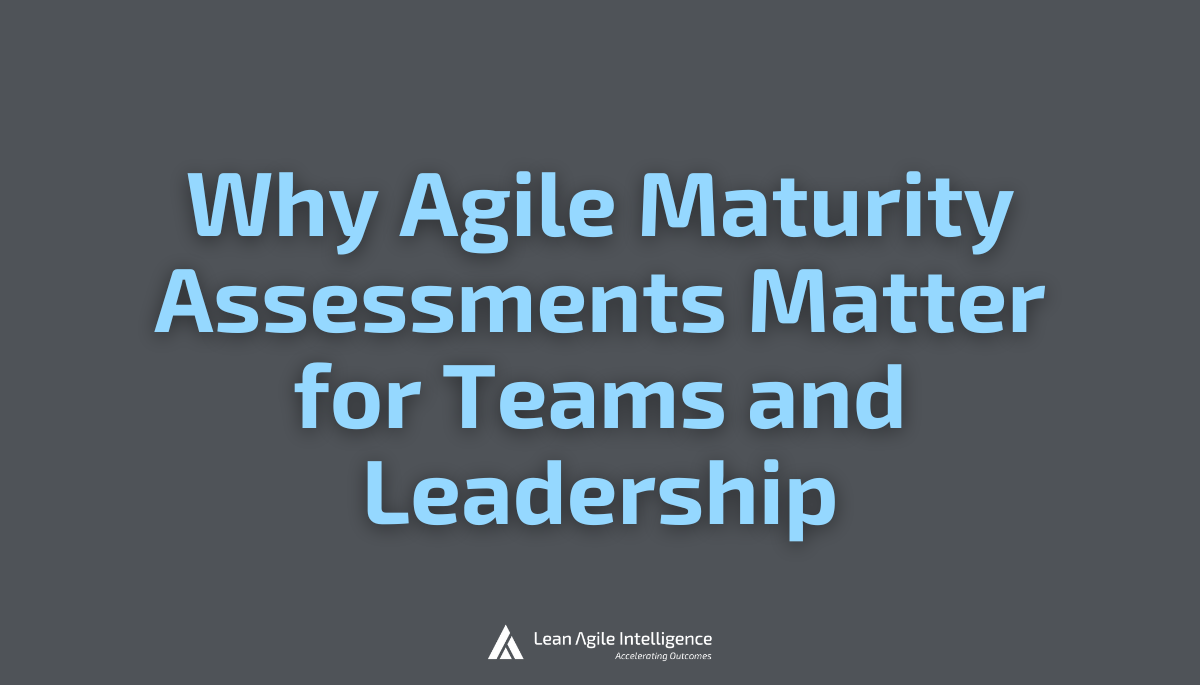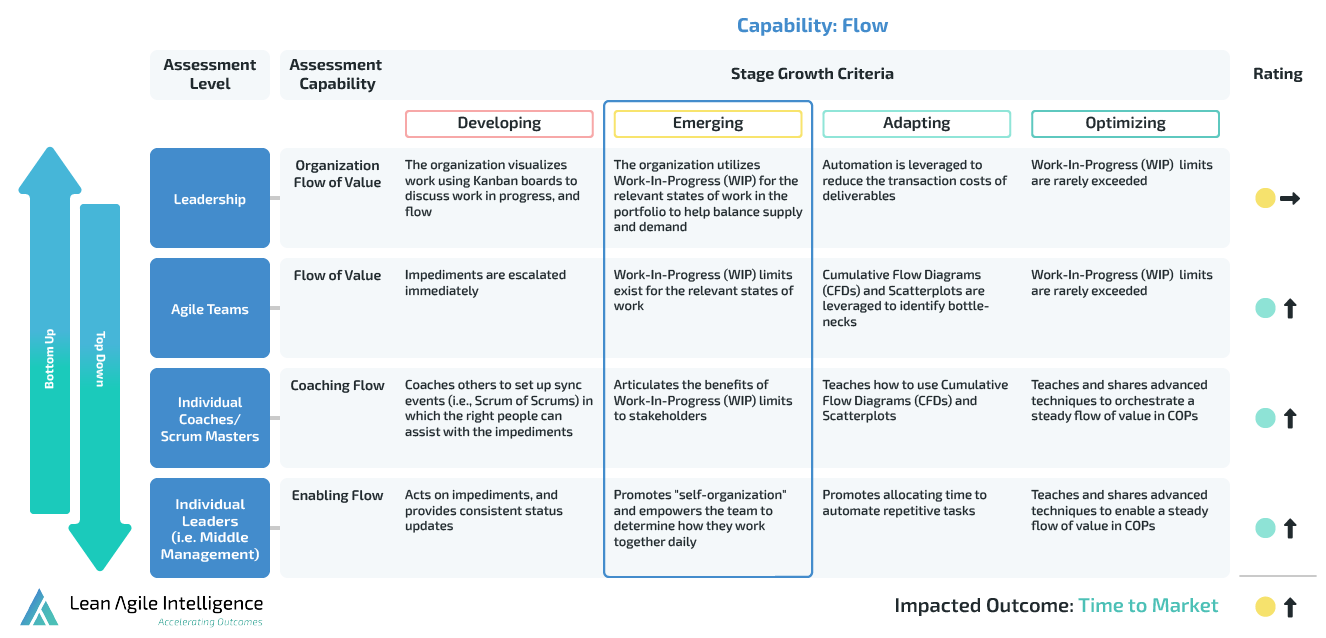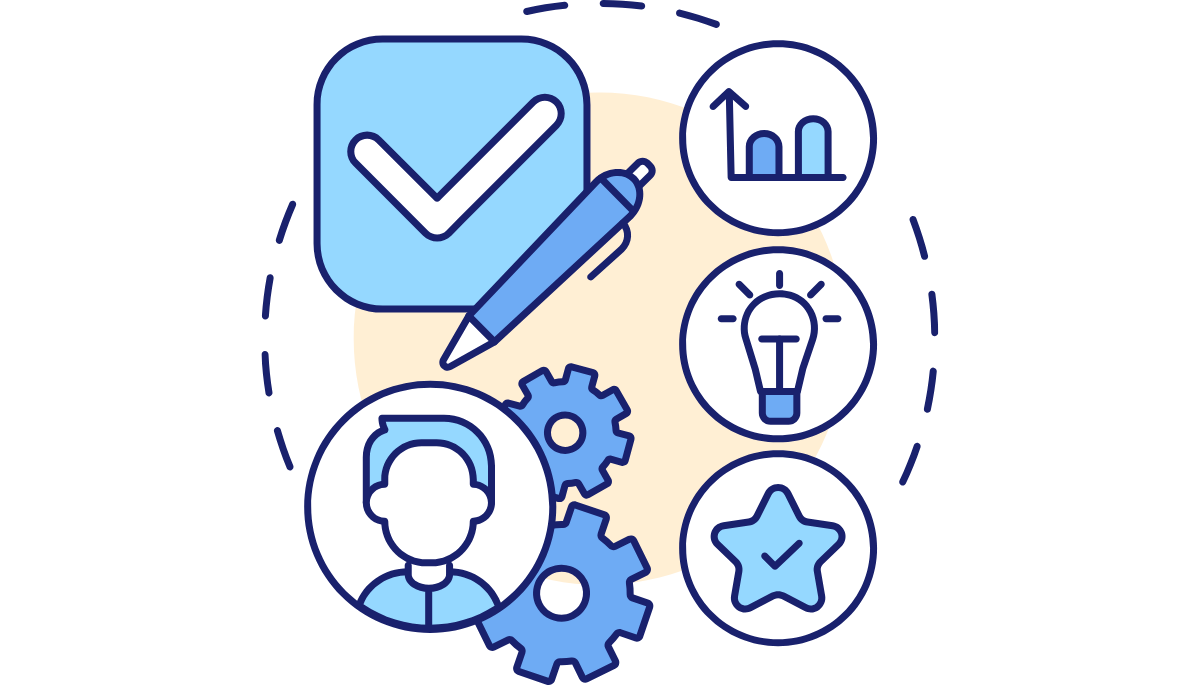Why Agile Maturity Assessments Matter for Teams and Leadership
By Team Lean Agile Intelligence

Agile maturity reflects a team's level of competence in executing Agile practices to achieve the core benefits of agility: responsiveness to change, faster value delivery, and high-quality solutions.
What is an Agile Maturity Assessment?
Agile maturity assessments help teams gauge their level of competence in Agile practices, providing a clear understanding of their current state. This insight enables teams to identify purposeful improvements, align with desired outcomes, and drive continuous growth in a way that delivers meaningful results. For a deeper understanding, explore this post on What Are Agile Maturity Assessments.
Agile Assessments Require an Agile Maturity Model
Agile maturity assessments provide teams with a clear understanding of their current competence in Agile practices, enabling purposeful improvements and alignment with desired outcomes. To support these assessments, an Agile maturity model serves as a foundational framework, defining specific stages of competence and offering a common language and criteria for continuous growth.
An Agile maturity model is a structured framework that defines specific stages of competence in Agile practices, providing a common language and criteria for assessing and improving team or organizational capabilities. Check out this post on how to build your own agile team maturity assessment.

Why Agile Maturity Assessments Are Important for Leadership
-
Align Agile Practices with Business Outcomes
-
Agile maturity assessments help leaders identify and prioritize the practices and behaviors most critical to achieving organizational goals. Developing a comprehensive Agile Maturity Assessment Strategy is crucial for leaders aiming to drive growth.
-
For example, in a rapidly changing market, teams may need to master the ability to pivot quickly and re-align priorities, making capabilities like adaptive planning highly valuable.
-
-
Optimize the Use of Agile Expertise
-
With limited Agile coaching resources, assessments allow leaders to pinpoint where coaches are most needed.
-
This targeted approach ensures coaches can deliver the most value by focusing on the teams or areas with the greatest need.
-
-
Identify and Address Impediments at Scale
-
Aggregated assessment data enables leadership to uncover common impediment patterns and areas of friction across teams.
-
By addressing these systemic issues, organizations can remove barriers to agility and enhance their ability to achieve strategic goals.
-

Why Agile Maturity Assessments Are Important for Teams
-
Understand the Current State and Identify Next Steps
-
Teams cannot improve without clarity on where they stand and what’s needed to grow.
-
Assessments provide a clear picture of their current competencies and guide them on the next steps to improve and become more confident in their Agile practices. Check out the different Agile Maturity Capability Templates available for teams.
-
-
Demonstrate Progress and Growth
-
Regular assessments allow teams to track their progress, showcasing their growth journey as they become more proficient in Agile practices and behaviors.
-
This transparency fosters a sense of accomplishment and reinforces continuous improvement.
-
-
Encourage Organic Improvement
-
With limited Agile subject matter experts (SMEs) available, assessments empower teams to drive their own improvement.
-
These tools spark rich conversations, enabling teams to identify opportunities for growth without relying solely on outside resources.
-
-
Create Opportunities to Ask for Help
-
Assessments give teams a structured way to signal when they are stuck or unsure of how to improve.
-
This transparency allows them to raise their hand and ask for the support they need, ensuring no challenges are overlooked.
-

3 Common Misconceptions About Agile Maturity Assessments
-
“Assessments Are Just Audits”
-
This is not true. Agile maturity assessments are tools for continuous improvement, not audits. Their purpose is to empower teams to evaluate their practices, identify areas for growth, and drive meaningful change.
-
While they provide insights for leadership, these assessments are equally focused on helping teams improve their own competencies and achieve their goals.
-
-
“Teams Can’t Self-Assess Accurately”
-
This misconception stems from the belief that self-assessments are too subjective. However, when assessments are objective and concrete—with clear criteria and structured facilitation—they lead to meaningful conversations and accurate reflections.
-
Additionally, a skilled facilitator can help guide the team, ensuring they remain honest and constructive in their self-evaluation.
-
-
“Once a Team Reaches a Level of Maturity, It’s Done”
-
This is a common misconception. The reality is that Agile maturity is a continuous journey. Teams should regularly recalibrate their practices to align better with evolving organizational goals and priorities.
-
Teams can graduate from one assessment template to another, reflecting their growth and enabling them to tackle new challenges, further refining their competencies and improving outcomes.
-
For teams looking to drive continuous improvement at every level, leveraging the power of Kaizen can be transformative. Learn more in this insightful post on Leverage the Power of Kaizen for Continuous Improvement at All Levels.
-
Conclusion
Agile maturity assessments and models are far more than just scoring tools—they are foundational for driving continuous improvement, fostering team ownership, and aligning Agile practices with strategic goals. By creating clarity at the team level and providing actionable insights for leadership, these assessments enable organizations to scale Agile effectively and achieve their desired outcomes. To effectively measure and enhance your team's Agile practices, consider utilizing an Agile Maturity Assessment Tool.
The journey to Agile excellence begins with understanding where you are today and taking purposeful steps toward where you want to be. Start now by adopting assessments and maturity models to transform your teams, your leadership, and your organization.